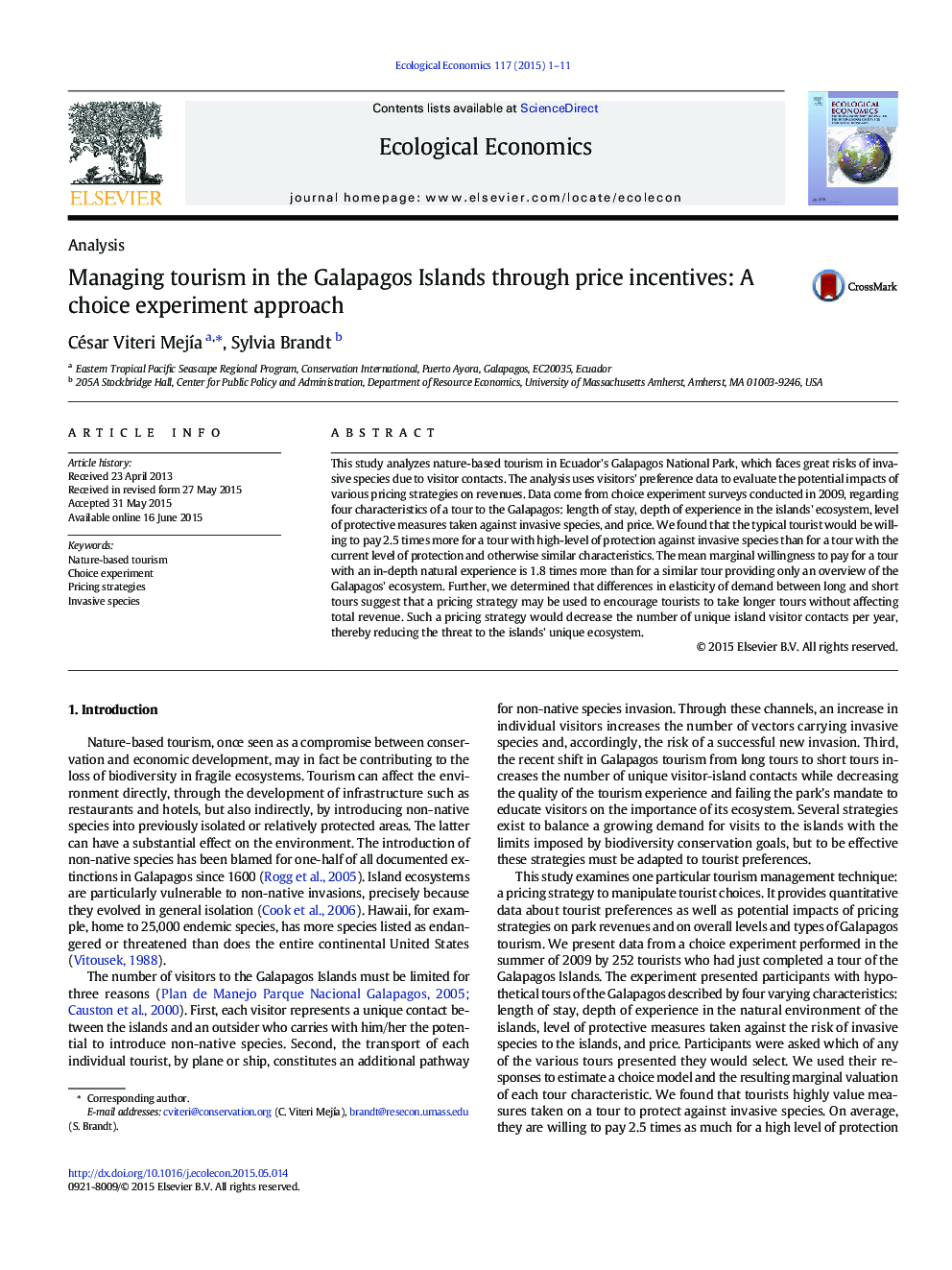| Article ID | Journal | Published Year | Pages | File Type |
|---|---|---|---|---|
| 5049274 | Ecological Economics | 2015 | 11 Pages |
â¢We administered a choice experiment to visitors of Galapagos Islands.â¢Results show that tourists value protection against invasive species.â¢A pricing strategy could reduce the number of unique island-visitor contacts.â¢This strategy can protect biodiversity without reducing revenues.
This study analyzes nature-based tourism in Ecuador's Galapagos National Park, which faces great risks of invasive species due to visitor contacts. The analysis uses visitors' preference data to evaluate the potential impacts of various pricing strategies on revenues. Data come from choice experiment surveys conducted in 2009, regarding four characteristics of a tour to the Galapagos: length of stay, depth of experience in the islands' ecosystem, level of protective measures taken against invasive species, and price. We found that the typical tourist would be willing to pay 2.5 times more for a tour with high-level of protection against invasive species than for a tour with the current level of protection and otherwise similar characteristics. The mean marginal willingness to pay for a tour with an in-depth natural experience is 1.8 times more than for a similar tour providing only an overview of the Galapagos' ecosystem. Further, we determined that differences in elasticity of demand between long and short tours suggest that a pricing strategy may be used to encourage tourists to take longer tours without affecting total revenue. Such a pricing strategy would decrease the number of unique island visitor contacts per year, thereby reducing the threat to the islands' unique ecosystem.
